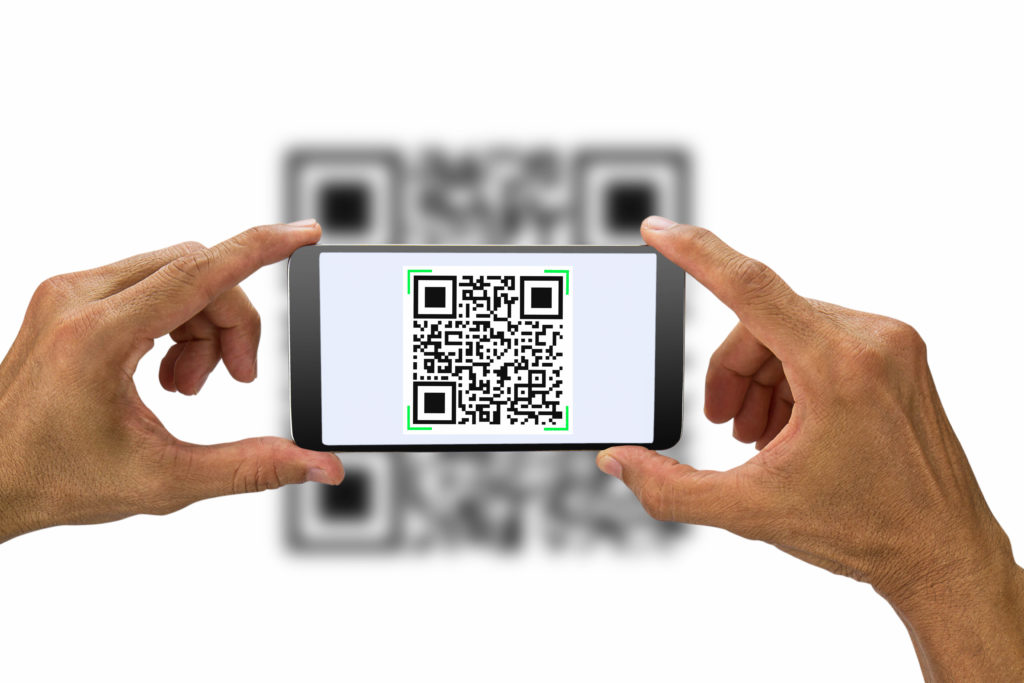January 25, 2024
Categories: Education & Security, Financial Planning

By Dawn Kellogg
What are QR Codes?
We encounter QR codes every day. Those strange squares made up of a unique pattern of micro-squares inside them appear in ads, on your favorite TV morning or talk shows, on receipts for things we purchase, on tables at restaurants, on beverage cups at your favorite fast-food outlet – everywhere.
What is a QR code and where did they come from?
A Quick Response Code is a two-dimensional type of bar code developed in 1994 by Denso Wave, a Japanese barcode developer (and subsidiary of Toyota).
In the early 1960s, Japan was experiencing a period of high economic growth. Supermarkets were booming and, to keep up with the demand for checkout counters, the use of a cash register was introduced. Due to manual inputting at checkouts, cashiers were developing carpal tunnel syndrome. As a solution to the problem, barcodes were developed. But barcodes had their own limitations. They can only be read from top to bottom. They were limited to 20 alphanumeric characters – not enough to contain a product’s information. The position of a barcode can also lead to scanning issues.
Enter Denso Wave who created a new type of barcode that could hold more information and be scanned in any scanner orientation. QR codes can be read from top to bottom and from right to left.
2 types of QR Codes
They might look the same, but there are actually two types of QR codes.
Static QR codes are free and permanent. They have a very dense pattern which can’t be changed. Its uses include simple linking to email addresses, URLs, texts, WiFi passwords, and social media links.
Static QR codes are good for personal use as they have a one-time purpose, the data that can be stored is limited and relatively simple – the more information contained therein can compromise the quality of the QR code, and it is free to use.
Dynamic QR codes are less dense. They are modifiable and can store even more data after they are printed on a surface. For marketing purposes, Dynamic QR codes are more useful in business as the number of scans, time and location of the scan and the device type can be tracked. You, as the consumer, are more likely to encounter Dynamic QR codes on a daily basis.
How do a I use a QR code?
These days, most smartphones and tablets have a reader built into the camera.
Scanning a QR code is relatively simple:
- Open the QR reader on an app or the camera on your smartphone.
- Point it at the QR code.
- A link to the data should instantly appear on your screen.
Are QR Codes safe to use?
It’s always best to err on the side of caution and only open codes from sites or businesses that you trust. Humans cannot read QR codes, which makes it easy for attackers to alter the code without being detected, leading the user to a spoofed login page to steal credentials, or a malicious software download.
Attackers can embed malicious URLs containing custom malware into a QR code which could then exfiltrate data from your mobile device when scanned or embed a malicious URL into a QR code that directs to a phishing site where you could be prompted to disclose personal or financial information.
QR codes are not going away any time soon and they can be a convenient, quick, and easy way to access websites. But just like anything else cyber-related, it’s best to be cautious when using them.
Dawn Kellogg is the Public Relations and Community Engagement Specialist for The Summit Federal Credit Union.
